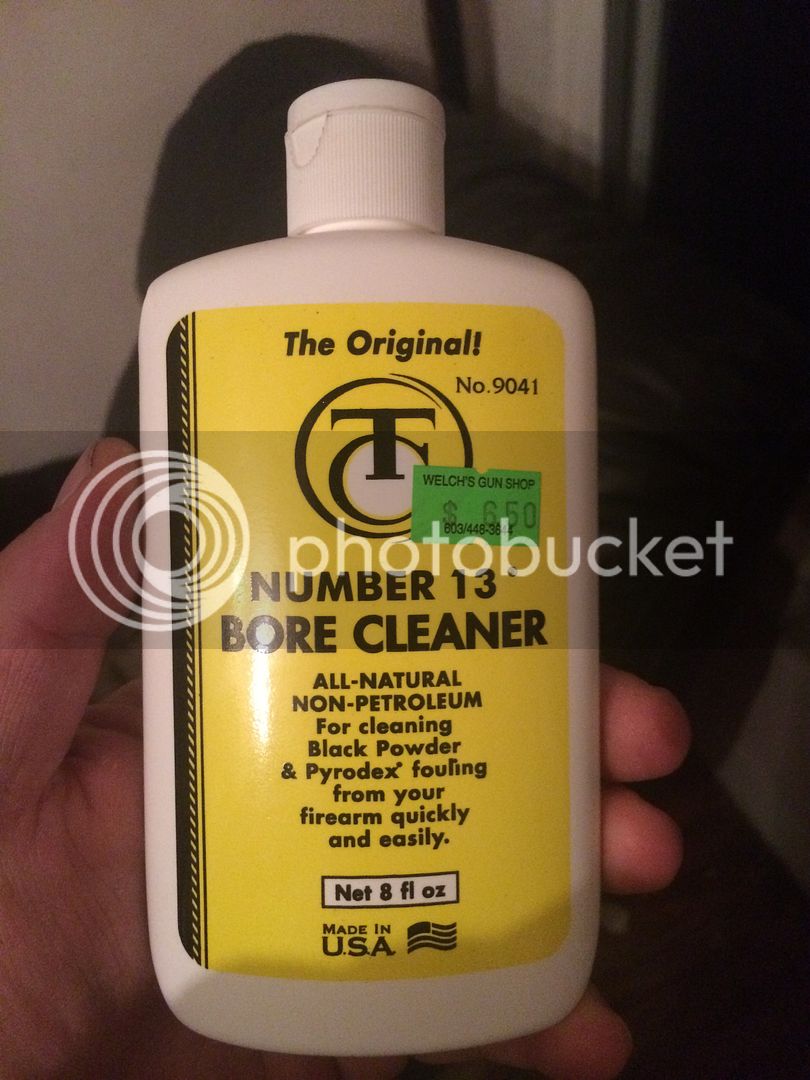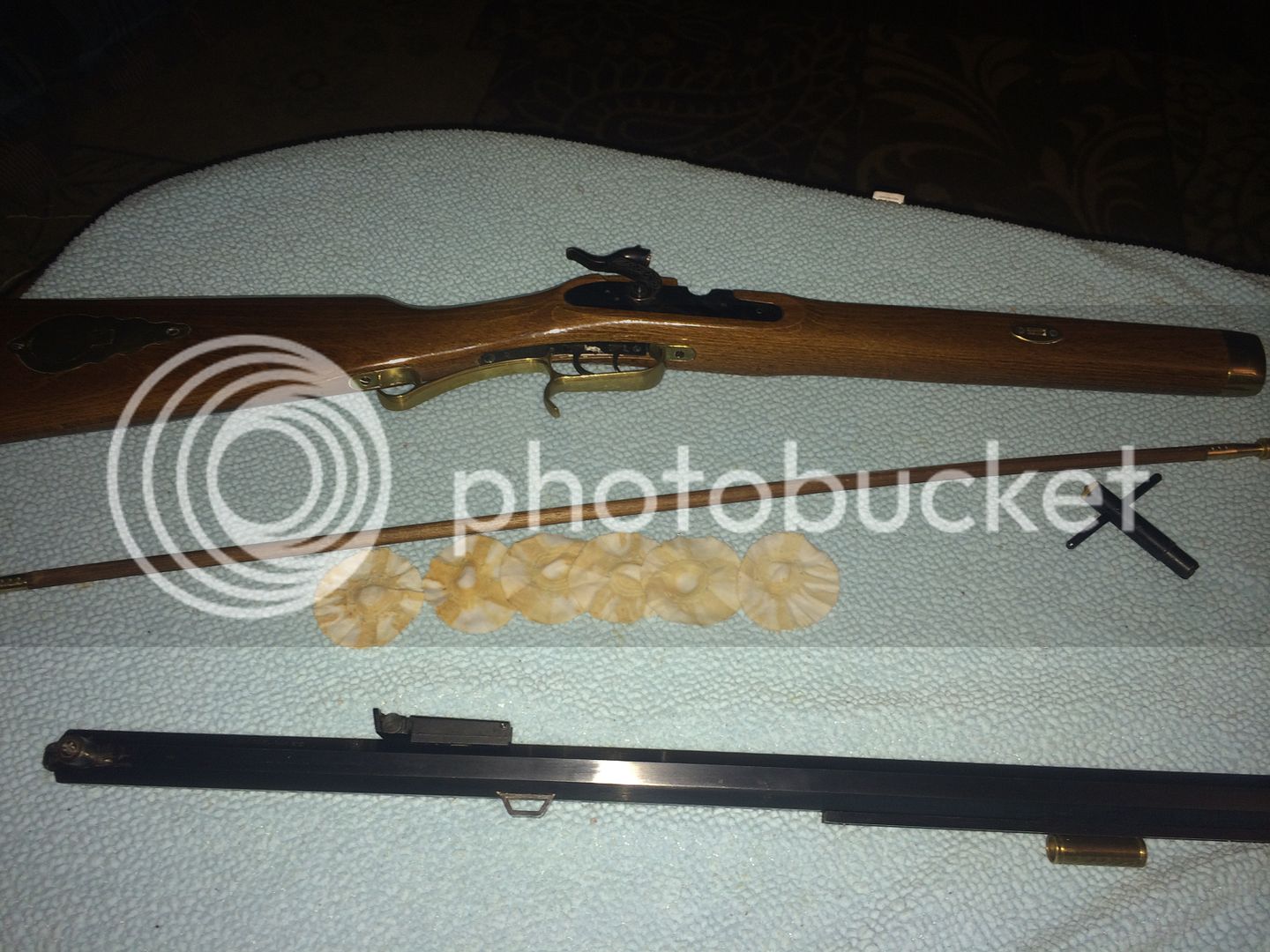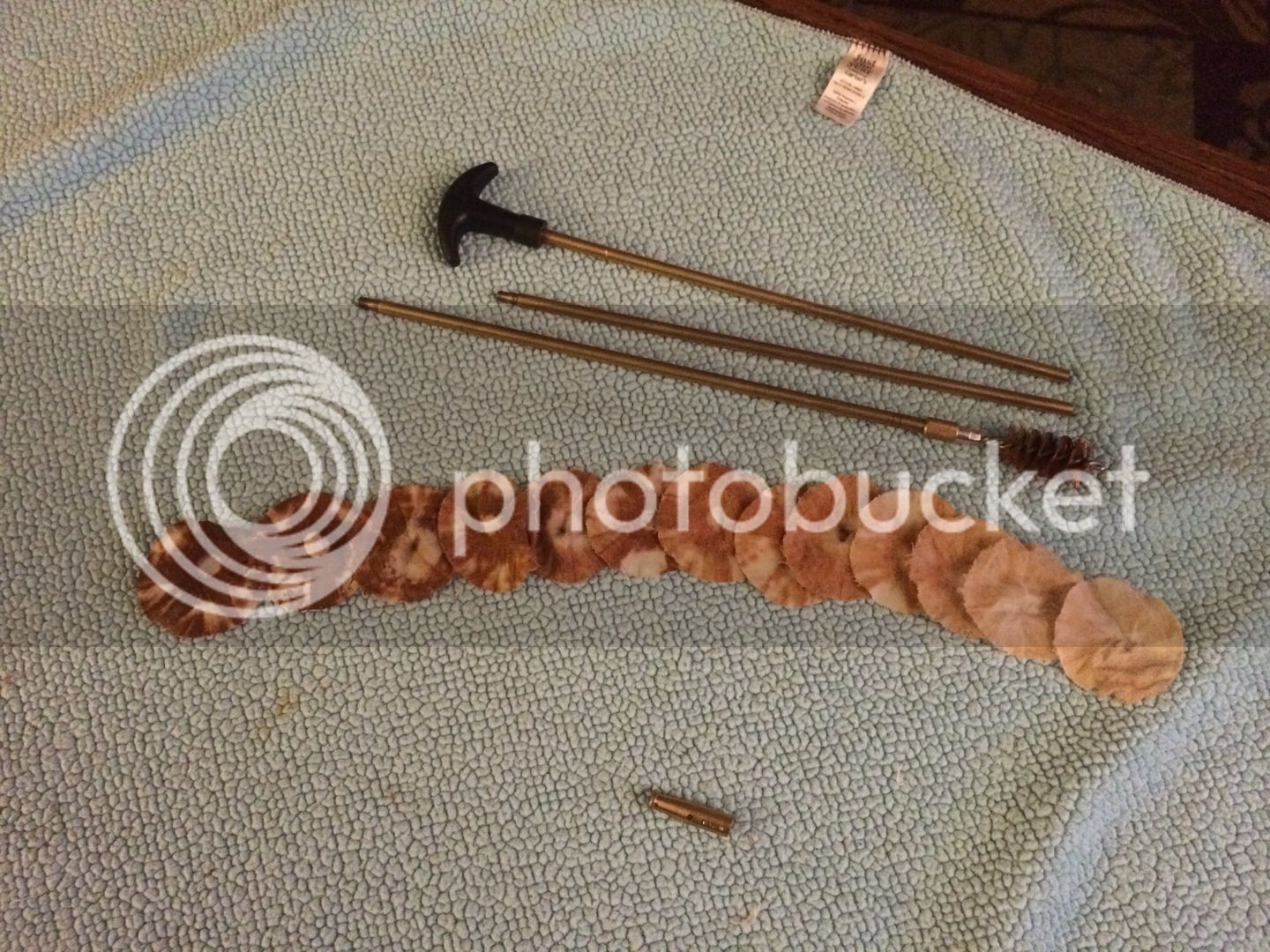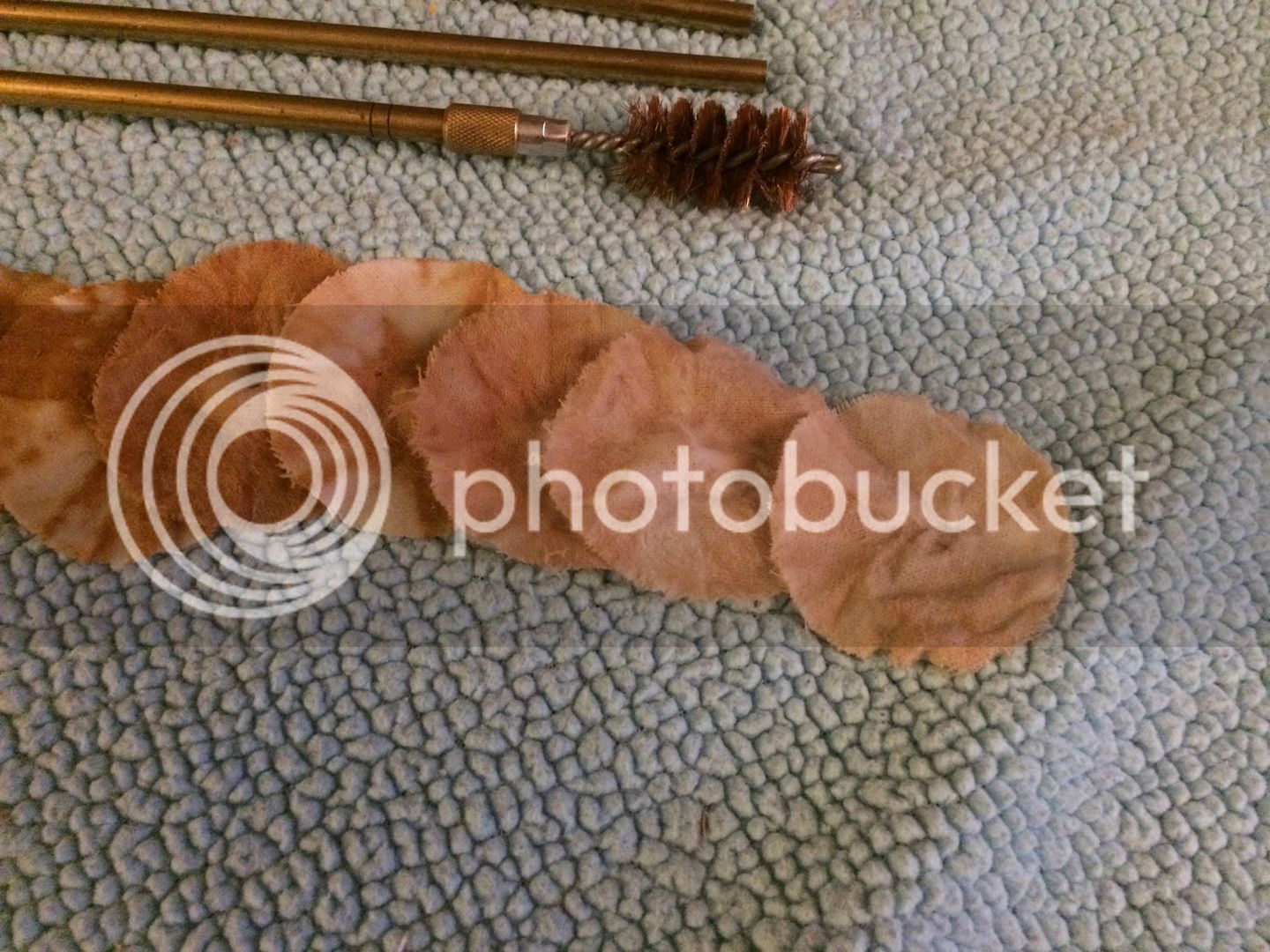Good luck with the TC #13 bore cleaner.
I got a new bottle of that as one of the extras thrown in with a used gun I bought.
Somewhat later on, I had been to the range shooting a few of my cap & ball revolvers and thought I would try it on one of them.
It cleaned the bore all right but when I wiped the bore with a clean patch I got some left over fouling, as expected. I also got a coating of rust! :shocked2:
Just as a point of reference, none of my pistols have ever had rust in their bores.
I wiped the bore with a few more clean, dry patches and then thought, "I'll try another wet patch of #13 just for the H of it."
The next patch, wet with #13 went thru the bore and was withdrawn. I immediately ran a clean, dry cleaning patch thru the bore and it came out coated with rust. :shocked2: :shocked2:
I'm not sure what they put into that stuff but anything that causes rust in my guns bores goes instantly into the trash. That's where it went and to that I say "good riddance!".
Maybe your TC #13 isn't causing your rust problem but I strongly suggest that you try cleaning your bore with plain water with a bit of dishwashing detergent in it.
Plain water and detergent has never caused any of my muzzleloaders barrels to instantly rust and I've been shooting black powder muzzleloaders for over 40 years now.
Don't forget, cleaning steel with soap and water (or #13 bore cleaner) will leave the surface bare and unprotected.
It must be protected or it will rust.
As I mentioned before, I've had good luck with Birchwood Casey Barricade. Other brands may work as well. Even 3 in 1 oil or motor oil will work.
Just don't leave the bore unprotected.





